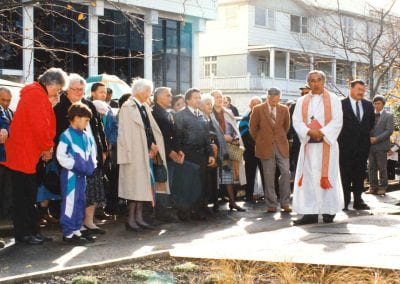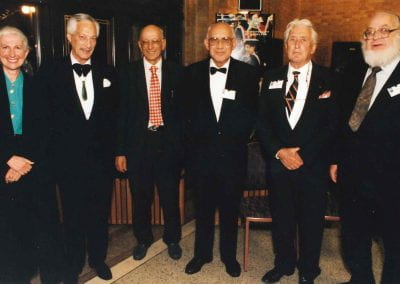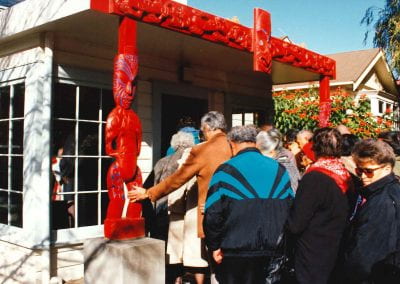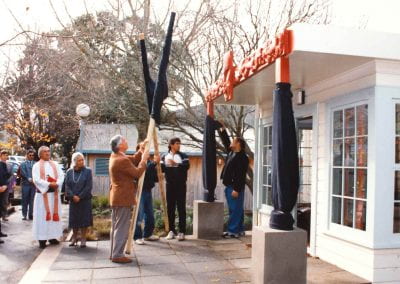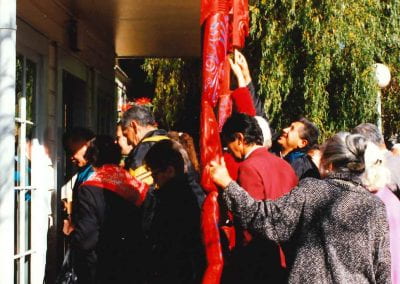Tō Mātou Tāhuhu Kōrero | Our History
The centre is named in honour of the late Sir James Henare, Tai Tokerau kaumātua and Ngāti Hine leader.
Sir James Henare was an instrumental supporter of Ngāti Whātua at the time of their Treaty Claim in the 1980s concerning their lands at Ōrākei. Ngāti Whātua kaumātua wanted to recognise this support and his general leadership in Iwi affairs. They approached Lady Henare and his whānau to ask if they would support his name being bestowed on the new research centre at the University. And so the centre name honours his leadership and the relationship between Ngāti Whātua and his people, Ngāti Hine.
From September 1991, hui were held in Tai Tokerau and Auckland to discuss the research needs of the tribal groups in this region. A proposal was put to Tai Tokerau representatives that The University of Auckland – with researchers and expertise across many faculties and disciplines – could assist. The key question was how.
Following these meetings, Professor Sir Hugh Kawharu and Dr Margaret Mutu from the University’s Māori Studies Department prepared a research framework concerning development issues, cultural and commercial asset analysis, social challenges and models relevant to Tai Tokerau people.
Further discussion took place with Sir Colin Maiden, the Vice-Chancellor, and Chancellor Sir Ian Barker. Sir Ian accepted the challenge articulated at one of the gatherings by Dame Mira Szászy: “What has Waikato [University] got that Auckland hasn’t?” The rhetorical answer was: a Māori research centre.
As a result of the many discussions, Professor Sir Hugh Kawharu was asked by Sir Colin Maiden to prepare a proposal. Twelve months later, in December 1992, the University Council approved Auckland’s first university-based Māori research centre to be established.

Our Rangatira Sir James Henare
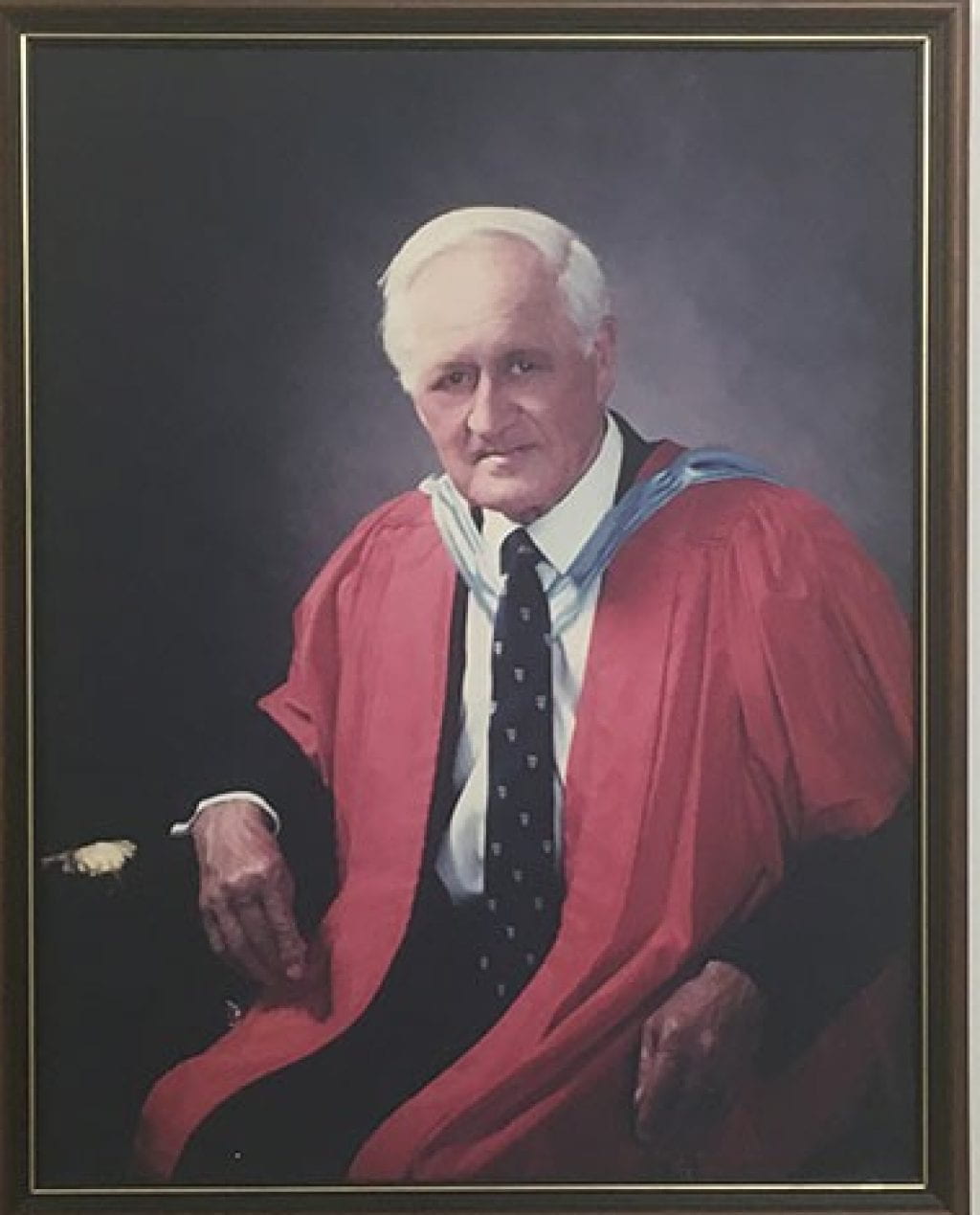

Our Research Centre
The James Henare Research Centre at 18 Wynyard Street was originally built as one of several in that street to provide accommodation for married army officers during the land wars of the 1860s. About 60 years later it was purchased by Mr Malcolm Draffin, a prominent architect who designed the Auckland Museum and other notable buildings in the city. Mr Draffin expanded the building, adding to both the front and rear sections. It was purchased by Sir Ernest Davis for the University in the 1960s and further modified to become the Vivien Leigh Theatre, and as such, contributed to the flourishing of the performing arts in Auckland.
The Centre was refurbished and enhanced, culturally, spiritually and artistically, by the addition of a front porch with an entranceway carved under the direction of Ngāti Porou master carver, Pakariki Harrison. He was then artist-in-residence at the University where he oversaw the construction of Tāne-nui-ā-rangi, the wharenui, on the University marae.
Watch: A legacy documentary on master carver Pakariki Harrison (Ngāti Porou) who carved more than 20 meeting houses. Through the stories of his granddaughters we meet the man behind the chisel.
Source: Waka Huia TVNZ (YouTube)

Vivien Leigh at the opening of the theatre named in her honour in Auckland, New Zealand, February 17, 1962
